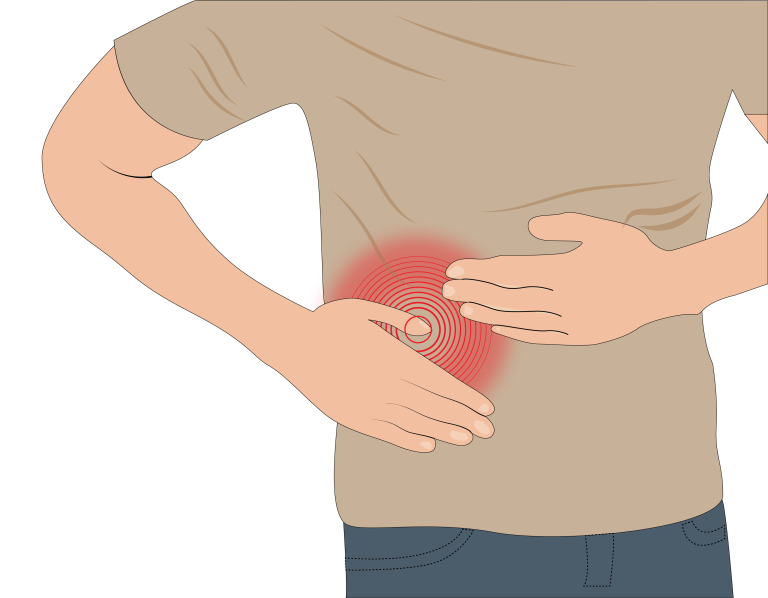Abdominal Cutaneous Nerve Entrapment Syndrome – “ACNES”
ACNES is chronic abdominal pain caused by a “pinched” nerve – specifically the intercostal nerves.
Like carpal tunnel syndrome, small nerves in the layers of the muscles in the abdominal wall can become pinched, leading to sharp, stabbing, burning pain in one specific area.
Patients can typically point to the exact spot of maximal pain, and pressure in this area makes the pain worse.
Activities that work the abdominal muscles (sit-ups) often make the pain worse. Sitting or bending over can also increase the pain due to wrinkling of the skin and muscles of the abdomen.
Many times, there is no real cause that can be identified that cause the nerve(s) to become compressed and cause pain. In some cases, patients will describe a fall, a car accident, or a ‘pulled muscle’ in their side, sometimes accompanied by bruising, that sets the process in motion.
One or more nerves that travel between and through the thin muscles under the skin become squeezed as a result, and send continuous pain signals to the brain.

Nerves travel through tight spaces at some points in the body. Carpal tunnel and cubital tunnel syndromes are examples of nerves that get compressed in these tight areas.
Abdominal nerves come from the spine and wrap around the body toward the front, to control the muscles and to give sensation to the skin (see the diagram to the left). When these nerves go into and out of the rectus muscle (“six pack abs”), they travel through very tight spaces and can get pinched, causing pain. Usually there is no definite cause identified.
Some people may develop a form of ACNES following surgery for another reason. The same nerves that get compressed in ACNES can be stretched, cut, burned, or caught up in scar as a result of any operation on the abdomen or chest. Examples include gallbladder removal, hernia repair, kidney or bowel surgery, and mastectomy. The pain, diagnosis and treatment in these situations is the same as with ACNES.
ACNES is the great masquerader – patients will often undergo medical work-up by several different physicians, and get many tests that all come up negative. There are many causes of pain INSIDE of the abdomen, and they are usually the main focus of investigation.Because ACNES is not usually considered on the list of possibilities by medical providers, it often escapes diagnosis. (It has not been a commonly taught reason for abdominal pain.) However, the pinched nerve(s) of ACNES lie OUTSIDE of the abdominal cavity, WITHIN THE MUSCLES that hold everything in.
ACNES can usually be diagnosed by a simple physical examination alone! Just including it in the thought process – the “differential” – can lead to it being discovered before obtaining specialist consultations or invasive testing. Focal pain, and tenderness from pressure in one primary spot, is characteristic of ACNES, and locates the spot of the pinched nerve.
ACNES will not show up on xrays, blood work, or other testing. Confirmation of the diagnosis and identification of the exact nerve(s) responsible can be obtained with a nerve block – a small shot of numbing medicine – that relieves the pain temporarily.
If the physical exam and nerve block are highly suggestive of ACNES, surgery can be highly successful in permanently eliminating the pain. The surgeon will make an incision over the nerve at the site of pain, find the nerve(s) involved, and either decompress or remove it. The success rate is greater than 80% in dramatically reducing or eliminating the pain. The following day, patients will usually describe that the ’nerve pain’ is better, and that it has been replaced with ‘surgery pain’, which goes away in a few weeks. The operation is relatively straightforward and is performed as an outpatient (you go home the same day).
Nerve Surgery Helps Relieve Chronic Pain
The majority of patients with chronic pain report significant decreases or complete resolution of their pain following nerve surgery. Most patients describe the ‘nerve pain feelings’ are improved as soon as the following day. Discomfort from the operation is frequently described as a completely different sensation, which subsides in the next few weeks.